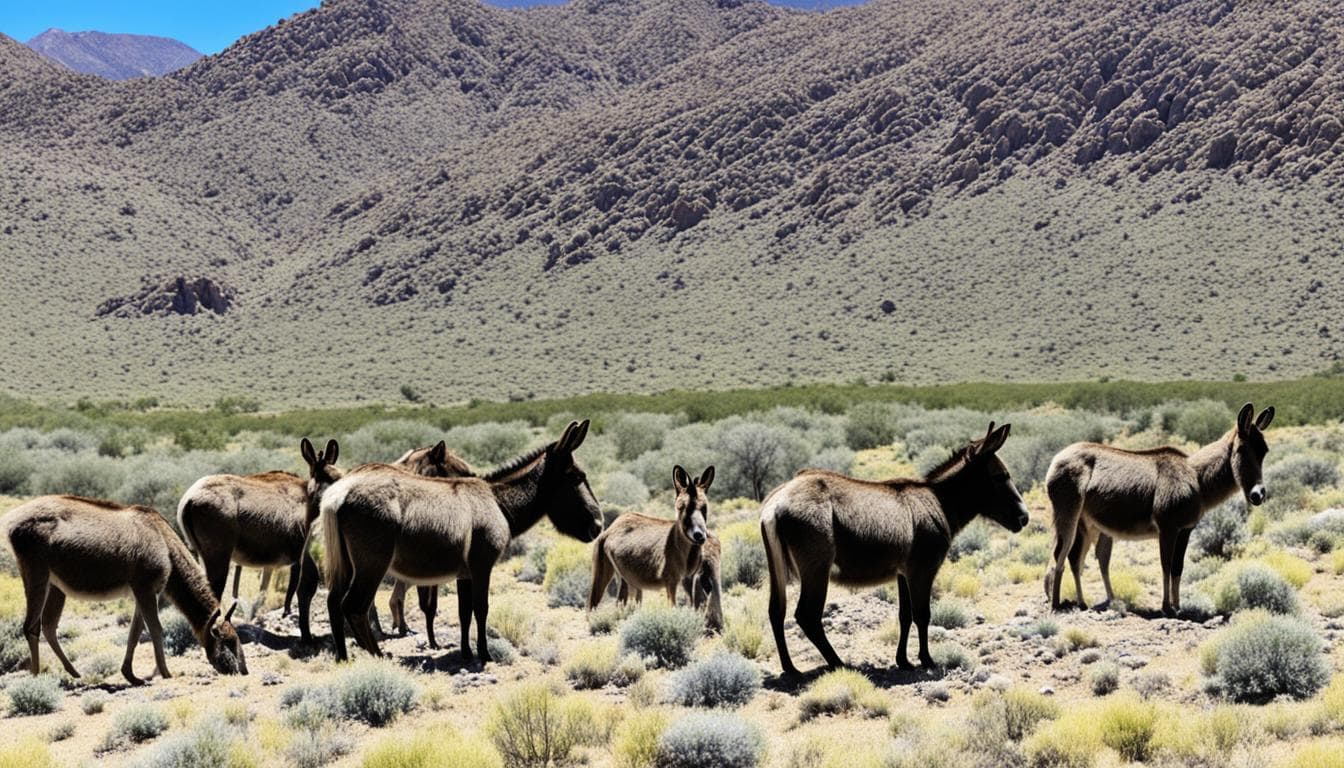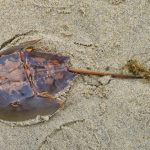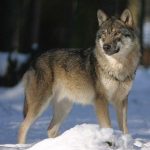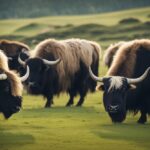The Wild Free-Roaming Horses and Burros Act of 1971 protects wild burros. It sees them as symbols of the West’s past and pioneer spirit. While not as common as wild horses, finding wild burros makes for a special experience.
You can spot them in certain areas of Arizona, California, and Nevada. There are also smaller groups in Oregon and Utah. In Arizona, check out the Big Sandy HMA and Lake Pleasant HMA. California is home to the Big Bear Wild Burro Territory and the Chocolate Mule Mountain HMA.
You can also see them in Nevada at places like the Marietta Wild Burro Range and Red Rock HMA. Remember to be respectful when you visit.
The History of Wild Burros in America
The tale of American wild burros starts with Spanish explorers introducing them. This action set the stage for their big part in developing the country. They went from helping in the Gold Rush to being protected by federal laws today, contributing to the USA’s rich history.
Early Introduction by Spanish Explorers
American wild burros arrived in the 1500s with Spanish explorers. Padre Eusebio Kino brought them to Tucson, Arizona, in 1679. These tough animals thrived and helped early settlers, showing their quick adaptation skills.
The Gold Rush Era and Mining Industry
During the Gold Rush, wild burros were vital. They carried supplies and equipment in the Southwest’s rough lands. After mining, many burros were set free, leading to wild herds surviving in the dry American west.
The Wild Free-Roaming Horses and Burros Act of 1971
The Wild Free-Roaming Horses and Burros Act of 1971 marked a new chapter for wild burros. It gave them federal protection, recognizing their importance in history. This law stopped the broad killing and using of burros, safeguarding them for future times.
Wild Burro Populations in Arizona
Arizona is a top spot for wild burros with many HMAs having strong populations. People who love nature will enjoy seeing these majestic animals.
Big Sandy Herd Management Area (HMA)
The Big Sandy HMA is perfect for seeing Arizona’s wild burros in their element. It shows how these animals thrive in the desert’s rough lands.
Black Mountain HMA
The Black Mountain HMA is home to many wild burros. It shows how these burros live and survive in very tough conditions.
Lake Pleasant HMA
At the Lake Pleasant HMA, you can admire Arizona’s wild burros. The HMA is known for its beautiful scenes, making it a great place to see these amazing animals.
These different places show how wild burros in Arizona adapt to their surroundings. Each one is a special chance for those who love wildlife.
Exploring Wild Burros in California
Looking for California’s wild burros? Visiting their habitats is a great experience. California’s Herd Management Areas (HMAs) have the perfect spots for these tough animals. They are key to the ecosystem and conservation.
Big Bear Wild Burro Territory
The Big Bear Wild Burro Territory is a top spot to see them. It’s full of stunning views that let you watch these animals live. You can walk trails and see the burros up close.
Chocolate Mule Mountain HMA
The Chocolate Mule Mountain HMA is great for burros in California. Its rough terrain gives burros what they need to live. It’s perfect for people who love wildlife to learn about how these animals fit in.
Chemehuevi HMA
The Chemehuevi HMA is also a good place to see California’s wild burros. It’s home to many plants and animals that live with the burros. Visiting here helps you see the burros’ skills and why it’s important to keep their home in good shape.
The Big Bear Wild Burro Territory, the Chocolate Mule Mountain HMA, and the Chemehuevi HMA offer a lot. You’ll learn more about wild burros and see the beautiful side of California.
- Big Bear Wild Burro Territory
- Chocolate Mule Mountain HMA
- Chemehuevi HMA
Discovering Wild Burros in Nevada
Nevada’s vast and arid lands are perfect for wild burros. These strong animals live well in the harsh deserts. They show us a unique, beautiful side of life in the desert.
Marietta Wild Burro Range
The Marietta Wild Burro Range is a special spot to see Nevada’s wild burros. It’s not just a place for these cool animals. It also has history and clean natural springs where the burros like to be.
The Goldfield HMA
The Goldfield Herd Management Area (HMA) is part of Nevada’s wild burro home. It’s a wonderful place to watch them live in the wild. They fit right in with the large, open spaces of Goldfield.
Red Rock HMA
The Red Rock HMA is another place to meet Nevada’s wild burros. Its breathtaking rocks make the perfect background. You can watch the burros, seeing how they live both alone and together, as they have for a long time.
| Wild Burro Range/HMA | Key Features |
|---|---|
| Marietta Wild Burro Range | Natural springs and historical sites |
| The Goldfield HMA | Rugged terrain and vast wilderness |
| Red Rock HMA | Unique geological formations |
Where can you find wild burros in the USA?
If you want to see wild burros, head to the southwest of the United States. Areas like Arizona, California, and Nevada are home to wild burros. The last sections showed where to find them through specific Herd Management Areas (HMAs).
Arizona, California, and Nevada stand out for wild burro sightings. They have HMAs where burros live freely. This makes it possible for people to see them in their natural surroundings. Important HMAs for wild burros in the United States include:
| State | Key HMAs |
|---|---|
| Arizona | Big Sandy HMA, Black Mountain HMA, Lake Pleasant HMA |
| California | Big Bear Wild Burro Territory, Chocolate Mule Mountain HMA, Chemehuevi HMA |
| Nevada | Marietta Wild Burro Range, The Goldfield HMA, Red Rock HMA |
If you’re looking to spot wild burros, it’s smart to check local rules. Remember to be respectful when watching. This protects both the burros and the people wanting a glimpse of these amazing animals.
Unique Features and Adaptations of Wild Burros
Wild burros have amazing adaptations for their tough homes. These show their strong survival skills and flexibility.
Physical Characteristics
Wild burros stand out with their long ears and colorful coats. They use their ears to stay cool and hear danger far away. This helps them in the hot, open deserts.
Survival Mechanisms in Harsh Environments
Surviving in the desert is hard, but wild burros have special skills. They can get water from plants, which is rare in their dry lands. They’re also tough and smart, making them great at living in the wild.

Dietary Habits
Food is very important for wild burros. They eat a diet lower in protein than horses, which is good for surviving on little food. This helps them live in the desert where finding food is tough. They also dig wells that help them and other animals find water.
| Adaptation | Description |
|---|---|
| Long Ears | Helps with thermoregulation and enhanced hearing |
| Coat Colors | Range from black to roan, providing camouflage |
| Water Extraction | Efficient water absorption from sparse vegetation |
| Low Protein Diet | Thrive on lower protein compared to wild horses |
| Well Digging | Creates water sources for themselves and other wildlife |
Wild Burros in Death Valley National Park
Death Valley National Park has a special group of wild burros. They stand strong in a harsh environment. These burros were brought here in the 19th century. Now, they are key parts of the area, but some ask about their impact.
History of Burro Introduction
In the 1800s, miners and prospectors used burros to carry their goods here. Some of these burros were left or ran away. They started to live on their own, a true survival tale. They’ve found ways to live in the tough desert over many years. The burros’ place in Death Valley shows a mix of human need and nature’s way of adapting.
Ecological Impact on Native Species
The survival story of burros is amazing. But, their living here has caused some troubles. They sometimes compete with native animals for food and water. This can make things hard for the local species. Still, there is a bright side. Some experts say burros do some good. Biologist Erick Lundgren points out that burros help by digging wells in dry places. This helps other animals find water.
| Aspect | Positive Impact | Negative Impact |
|---|---|---|
| Resource Competition | – | Competes with native species for food and water |
| Well-Digging | Creates water sources for other wildlife | – |
| Vegetation Impact | – | Overgrazing can harm native plants |
Still, what to do about the Death Valley National Park burros is a hot topic for those who study and care for the area. They’re working hard to find the best way. This is to help both the original animals and the burros find a place to live.
The Role of Burros in Southwestern Ecosystems
Wild burros are key players in Southwestern ecosystems because of what they do and how they live. They aren’t just there; they change the land, making it better for others. By studying how they affect plants and animals, we learn more about keeping these areas in balance.
Contributions to Biodiversity
Burros’ digging helps create water sources, like new life lines, in dry areas. This makes life easier for both plants and animals. Their role in creating these water spots shows how important they are for nature’s variety to thrive in harsh conditions.
Interactions with Native Flora and Fauna
Burros’ eat certain plants, and this keeps the land diverse. By preventing one plant from taking over, they help support other plant kinds. Also, their eating habits and moving around affect where other animals live, creating a big, connected web of life. This shows us that their presence is crucial for a healthy and lively environment.
Having wild burros around gets people talking about taking good care of the land. Keeping their positive impact in mind can help us preserve nature’s balance. It reminds us that every part of the ecosystem matters.
FAQ
Where can you find wild burros in the USA?
You can find wild burros in the southwestern United States. This includes areas like Arizona, California, and Nevada. They also live in Oregon and Utah. Specific places like the Big Sandy HMA in Arizona and the Chocolate Mule Mountain HMA in California are good spots to see them.
How were wild burros introduced to America?
Spanish explorers brought wild burros to America in the 1500s. By the late 1600s, they were in Tucson, Arizona, thanks to Padre Eusebio Kino. Originally used for labor during the Gold Rush, many became wild after they were released or escaped.
What is the Wild Free-Roaming Horses and Burros Act of 1971?
The Wild Free-Roaming Horses and Burros Act of 1971 protects wild burros and horses. It considers them symbols of the West’s pioneer spirit. The law aims to conserve them and prevent misuse through federal protection.
Where can you see wild burros in Arizona?
Arizona has places like the Big Sandy HMA for spotting wild burros. Other areas include the Black Mountain HMA and the Lake Pleasant HMA. These places host many burros and let visitors see them in their natural desert homes.
What areas in California are known for wild burro sightings?
In California, you can see wild burros at places like the Big Bear Wild Burro Territory. The Chocolate Mule Mountain HMA and the Chemehuevi HMA are also good. These areas offer chances for viewing the burros in their various habitats.
Which areas in Nevada are notable for exploring wild burros?
Nevada has the Marietta Wild Burro Range, the Goldfield HMA, and the Red Rock HMA. These places are part of the harsh desert where burros have adapted well. They let you see how the burros survive in the desert.
What are some unique features of wild burros?
Wild burros are known for their long ears, different coat colors, and strong bodies. They can get by on very little food. Their digging behavior in dry areas helps their own survival and supports other wildlife with water.
What challenges do wild burros pose in Death Valley National Park?
Wild burros in Death Valley Park can compete for resources with native species. Yet, their digging creates water sources which help other wildlife. Managing the burros is a debate topic among those studying wildlife.
How do wild burros contribute to the biodiversity of the Southwestern ecosystems?
Wild burros play a part in Southwestern ecosystems by their actions and roles. Their digging for water helps various plants and animals. They also spark conversations about conservation and interact with the local ecosystem in complex ways.







